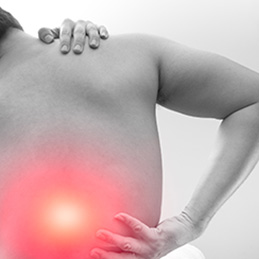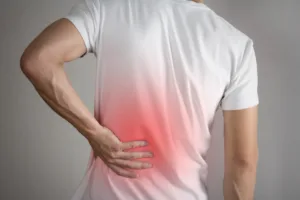A disc herniation is a condition in which the soft, spongy material in the center of a spinal disc bulges out through a tear in the outer layer. This can put pressure on the nerves surrounding the affected disc, causing pain, numbness, or weakness in the back, legs, arms, or other parts of the body. Disc herniations are often caused by age-related wear and tear or repetitive strain, but can also result from a traumatic injury.


Spinal Stenosis
Spinal stenosis is a condition where the spaces within the spinal column narrow, causing pressure on the nerves that run through the spine. This can lead to symptoms such as back pain, numbness or tingling in the legs, and difficulty walking or standing. Spinal stenosis can be caused by a variety of factors, including age-related changes in the spine, spinal injuries, or conditions such as arthritis. .
Myelopathy
Myelopathy is a condition that occurs when the spinal cord is damaged, leading to a range of neurological symptoms. This can happen as a result of a variety of factors, including spinal stenosis, herniated discs, or spinal cord injuries. Symptoms of myelopathy can include muscle weakness, loss of coordination, difficulty with balance, and changes in bowel or bladder function.


Sciatica
Sciatica is a condition characterized by pain that radiates along the path of the sciatic nerve, which runs from the lower back through the hips and buttocks and down each leg. The sciatic nerve is the longest in the body and is crucial in connecting the spinal cord to the leg muscles. When this nerve becomes compressed or irritated, it can lead to a range of symptoms collectively called sciatica.

